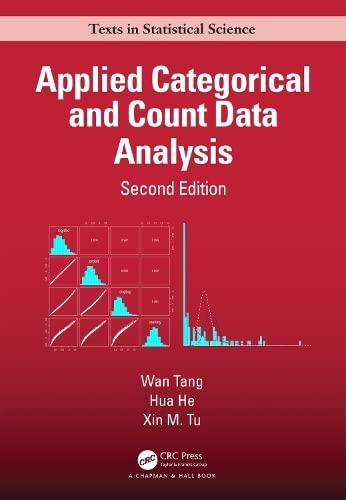For an (I times J) contingency table with ordinal column variable (y(=1, ldots, J)) and ordinal row
Question:
For an \(I \times J\) contingency table with ordinal column variable \(y(=1, \ldots, J)\) and ordinal row variable \(x(=1, \ldots, I)\), consider the adjacent category model
\[\log \left[\frac{\operatorname{Pr}(y=j+1 \mid x)}{\operatorname{Pr}(y=j \mid x)}\right]=\alpha_{j}+\beta x, j=1, \ldots, J-1\]
(a) Show that any \(2 \times 2\) subtable consisting of adjacent rows and adjacent columns has the same odds ratio, \(\exp (\beta)\). Thus, this is the uniform association model of Goodman \((1979,1985)\).
(b) Show that independence of \(x\) and \(y\) is the special case when \(\beta=0\).
(c) A generalization of the model replaces \(\beta x\) with unordered parameters \(\left\{\mu_{i}\right\}_{i=1}^{I-1}\), i.e., treats \(x\) as nominal variable and considers the model
\[\operatorname{logit}\left[\frac{\operatorname{Pr}(y=j+1 \mid x)}{\operatorname{Pr}(y=j \mid x)}\right]=\alpha_{j}+\mu_{i}, i=1, \ldots, I-1 \text {. }\]
For any two rows, show that all the \(2 \times 2\) subtables consisting of adjacent columns have the same odds ratio. Note that these common odds ratios may be different for different pairs of rows. This is the row-effect model of Goodman \((1979,1985)\)
Step by Step Answer:

Applied Categorical And Count Data Analysis
ISBN: 9780367568276
2nd Edition
Authors: Wan Tang, Hua He, Xin M. Tu





